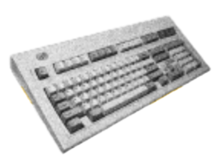70 years ago, Stanford Engineering pioneered a new model for graduate education for industry professionals – and it still thrives today

Staff monitoring the broadcast of course sessions in the Stanford Instructional Television Network (SITN) master control room. | Source: 1988 Stanford University Archives
Ramesh Manian is a believer in lifelong learning. A program manager at Microsoft, Manian worked full time while also earning his master’s in management science and engineering at Stanford, taking courses that range from strategy management to computer science to entrepreneurship. In his view, ongoing education is not merely an option but a necessity in today’s rapidly evolving technological landscape.
For 70 years, working professionals like Manian have been able to gain the latest engineering knowledge and technological skills by earning a graduate degree – while continuing to work in industry – through Stanford’s Honors Cooperative Program (HCP). The program allows professionals to grow in their careers, and supports a dynamic knowledge transfer of technological innovation between Stanford and a broad spectrum of global enterprise.
“My interaction with other students and faculty has helped my thinking broaden in a way that my team leaders look at and go: ‘Here is a perspective that I would really love to learn more about,” Manian said. “I have been given more responsibilities in my work, and the program has expanded my curiosity. I am encouraged to go back into my work to say: How would it be if I did it this way?” Manian found a decision analysis course that helped him prioritize projects at work, while a data science fundamentals class helped him with approaching artificial intelligence projects.
“I have been given more responsibilities in my work, and the program has expanded my curiosity.” - Ramesh Manian
1969
Stanford Instructional Television Network (SITN) broadcasts 12 Stanford graduate engineering courses on two television microwave channels to students off-campus.
1971
Stanford Instructional Television Network expands to 4 channels.

1972
Tutored Video Instruction is introduced and becomes a recognized model for distance education. TVI is the predecessor to online learning.
Pioneering education for industry professionals
Stanford Engineering’s commitment to providing graduate education to working professionals dates back to the 1950s and grew out of an industry need. Early on, area companies – several of which were founded by Stanford Engineering alumni – wanted their engineers to stay on top of rapidly advancing technologies.
After the end of World War II, then-Stanford School of Engineering Dean Fred Terman supported the creation of a learning model that allowed working engineers at businesses in the San Francisco Bay Area to earn part-time master’s degrees and apply those new skills in industry. In 1954, a program was launched to allow employees from nearby firms, including Hewlett-Packard, Sylvania, General Electric, and the Stanford Research Institute, to take night classes at Stanford. Exams and homework assignments were couriered to the companies, who paid their employees’ tuition. Student employees could earn a master’s degree in two calendar years. That cooperation between Stanford Engineering and industry became known as the Honors Cooperative Program (HCP).
As technology advanced, so did Stanford Engineering’s delivery mechanisms to increase access to credentialed graduate education.
By 1969, HCP began broadcasting lectures on a closed TV network within a 50-mile radius of Stanford’s Hoover Tower. Electrical Engineering Professor Jim Gibbons, who later served as dean of the School of Engineering from 1984 to 1996, championed tutored videotape instruction through the 1970s.

Stanford Instructional Television Network (SITN) students go to class at their job site. | Source: 1989 Silicon Valley Engineer Magazine
1992
Stanford Instructional Television Network expands to five channels. Repeaters are installed on the Sunol Ridge the next year to increase transmission throughout the Bay Area.
1995
Stanford Center for Professional Development created to encompass SITN and expand into new delivery technologies with a wider portfolio of learning opportunities.
1996
Stanford Online launched offering non-degree education using technology developed by Stanford faculty, supported by a grant from Sloan Foundation. Delivering 8 online, asynchronous courses, it is the first university internet delivery system incorporating text, graphics, audio, and video.
1997
Stanford Online named the "Most Significant Advancement for Online Learning" by the U.S. Distance Learning Association. Fifth microwave broadcast channel is added through grant from Hoover Institution for distance degree education.
Tangible impact
HCP has had a major impact on the evolution of Silicon Valley’s innovation ethos and has fostered industry collaboration and tech transfer both locally and around the world.
In the Bay Area, local companies have benefited since the early days. Researchers Mihai Codreanu and John Bonney, both Stanford PhD candidates in economics, analyzed more than 500 HCP graduates over their careers, alongside patent records associated with companies where they worked. Codreanu said the study compared HCP employees with colleagues who didn’t do the program. “These two groups looked very similar before [the program],” he said. But a few years after graduates completed HCP, “the propensity to patent essentially increased for the individuals who took courses at Stanford, and the patents had an increased likelihood of using concepts taught during their coursework.”
“We saw that the inventors that participated in [the HCP] program did go on to file more patents, they were more likely to file patents in the future, and then when they did file patents, they filed a greater quantity – and on average [the patents] had more citations,” Bonney added.
Andy DiPaolo, SCPD’s founding executive director and leader between 1995 and 2012, indicated the Stanford-industry collaboration has always been of mutual value. Faculty and campus students benefited from learning about industry innovation, and industry students gained value with faculty integrating their current research into coursework. DiPaolo recalls a typical example in an aeronautics course, where a practicing design engineer in HCP shared current perspectives on the practical use of composites in aircraft design with younger classmates who did not yet have involvement in industry. The result was a valuable, real-world learning experience for all the students in the course.
“Being in the center of Silicon Valley, we have a unique advantage, unlike anyplace else in the world, where academia and industry work together to support research and education, which facilitates technology innovation, encourages entrepreneurship, and promotes the lifelong learning of engineers,” DiPaolo said.

The control room of the Hewlett-Packard Auditorium in the Gates Building with facilities for distance learning in 1997.
"Being in the center of Silicon Valley, we have a unique advantage, unlike anyplace else in the world, where academia and industry work together to support research and education, which facilitates technology innovation, encourages entrepreneurship and promotes the lifelong learning of engineers,” DiPaolo said.
Manian has found the mix of professional experience and job backgrounds in his classes to be beneficial. “We’ve developed a strong community that professionally helps me, personally helps me, and it also expands my interdisciplinary interests through people who are consultants, biology students, economics majors, and so on,” Manian said.
For fourth-year chemical engineering master’s student Andrea Beltran Lopez, HCP has already translated into an advantage for her career in biotech. Beltran Lopez is an engineer in the alternative protein space and was able to switch to a better job at a different company in the Bay Area after building data analysis skills at Stanford.
“It has definitely helped me get another job,” said Beltran Lopez. “My motivation was being able to get a degree without compromising my work.”
Beltran Lopez has also enjoyed being able to take classes beyond the core requirements for her chemical engineering degree, spurring new interests in bioinformatics.
Adapting with the times
HCP continues to be a part of CGOE’s vast spectrum of learning options for individuals throughout the world. “Our organization has continually evolved over the decades to meet the changing needs of learners and industry, while harnessing technological advancements to transform and elevate how education is delivered,” Little said.
The part-time, flexible model HCP offers continues to enable professionals like Manian to expand their careers. He is continuing his educational journey beyond the master’s program to earn a PhD at Stanford Engineering, where he will explore how artificial intelligence technology impacts the way we work and how jobs are evolving.
“I am a lifelong student, so to have such a world-class education – available no matter when I work, how old I am, or what discipline I am in – that has no parallel that I know of.”






